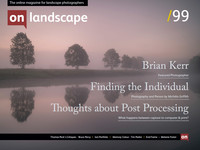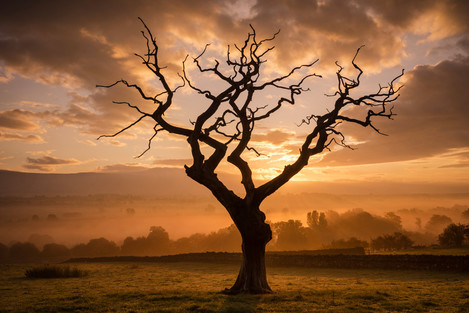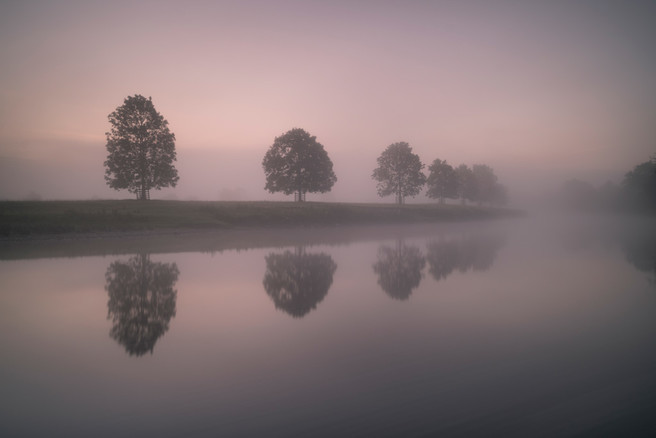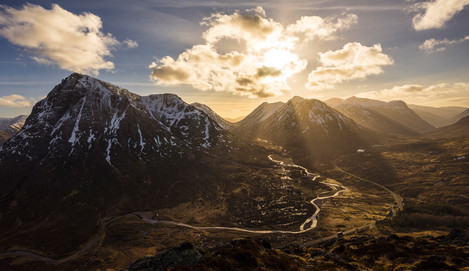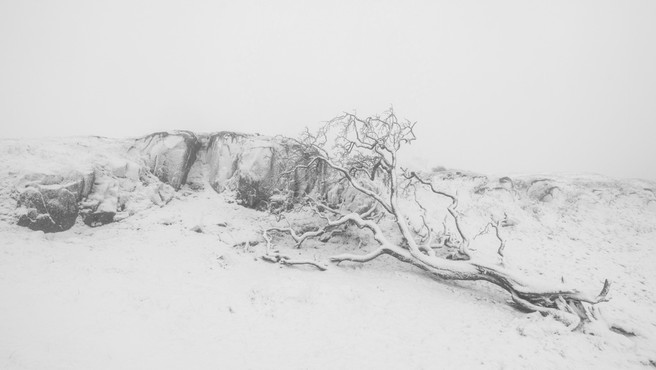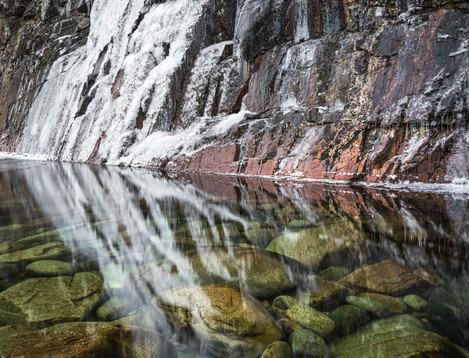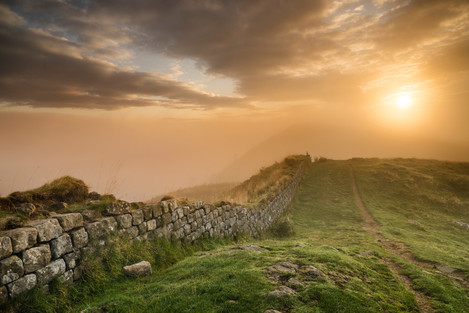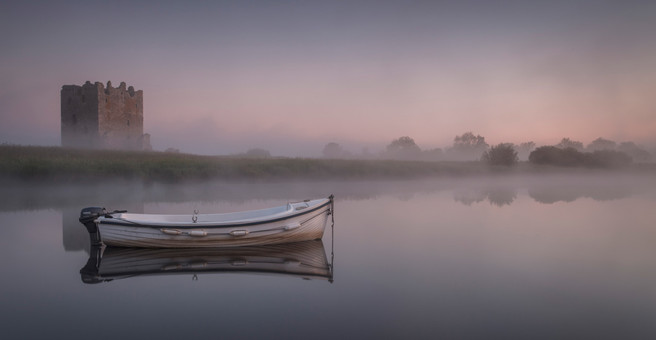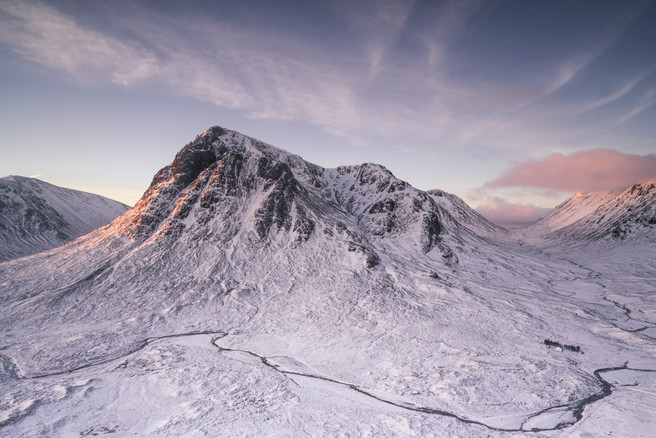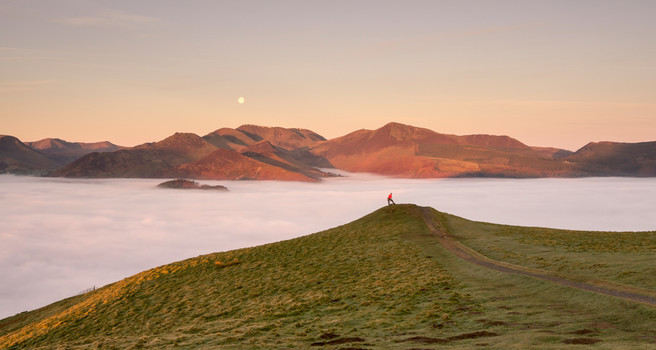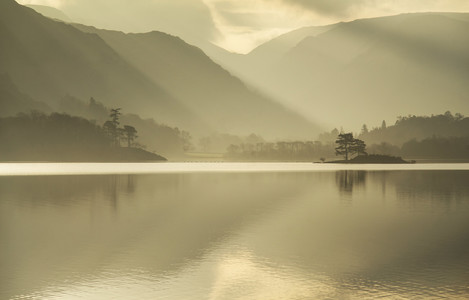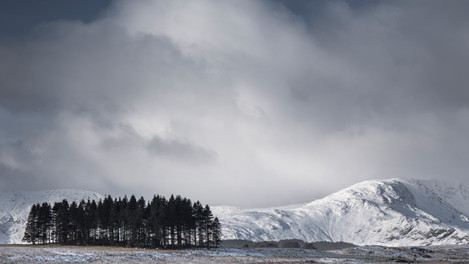Featured Photographer

Brian Kerr
A Scottish landscape photographer from Dumfries, based in Carlisle but we are looking to move back into Scotland again to the borders town of Moffat. I have been a landscape photographer for around 10 years now, although it is still only as passionate hobby.

Tim Parkin
Amateur Photographer who plays with big cameras and film when in between digital photographs.
For this issue we've been talking to Brian Kerr, Dumfries born and now Cumbria based photographer with a passion for the hills.
Can you tell me a little about your education, childhood passions, early exposure to photography and vocation?
It’s fair to say that along with the majority of the population in the 1970s, our family only had instamatic-type cameras; expensive SLRs were something that other people had. I do remember borrowing my Dad’s Polaroid but I can’t have been that bothered with it! I enjoyed things like fishing with my Dad, visiting local historic sites – we lived at the edge of town fairly close to the countryside so I spent a lot of time exploring.
I didn’t like school at all. My favourite subjects were art, history and geography, and my art teacher suggested I would be good at graphic art. Around this time computers were just starting to be used for this so I decided to do a computer foundation course. My first job was helping to run a financial support system for a distribution company and involved travelling throughout the local area, I enjoyed this freedom and it meant I got to know my local patch really well.
In my later teenage years my interests were in cars – I was a bit of a boy racer! My spare time was spent tinkering with cars; I just loved my MkII Ford Escort. It wasn’t until about 10-12 years ago that I really got into photography, around the time I met my partner Suzanne.
We spend a lot of time enjoying the countryside together, although we have a slightly different way of looking at things – she tends to take quick photos of flora and fauna while I’m looking at the wider picture.
What are you most proud of in your photography?
It’s a special feeling being able to communicate my love of the landscape with others who appreciate it. In my opinion it’s one thing “seeing” a beautiful scene, but another to capture it while maintaining the atmosphere. You could say that the skill of a good photographer is to recreate what the mind’s eye sees.
My first big achievement was a commendation in Landscape Photographer of the Year in 2013 – followed earlier this year when I was thrilled to be named the winner in the Landscape category of the inaugural Scottish Landscape Photographer of the Year Competition. I especially enjoy it when people I respect & admire say they like my work.
In most photographers lives there are 'epiphanic’ moments where things become clear, or new directions are formed. What were your two main moments and how did they change your photography?
Shortly after I met Suzanne, I went along with her to meet a group of friends who loved prehistoric rock art. I was aware that there were carvings close to me in Dumfries & Galloway but I didn’t know much about them – I discovered that there are thousands of similar sites all over the UK.
I very quickly developed a passion for the subject – I wanted to see more, to find new ones, and record them in the best way possible so that others could see what I saw. It was well-known that oblique lighting such as low winter sunlight is one of the best ways to highlight the surface of the rock to show fine details which sometimes have been worn over time.
Along with some of the other members of the group I experimented with different artificial light to improve the recording techniques, to make the carvings come to life. By necessity, I was developing lots of other photographic skills such as using side-flash, filters and different exposure times which would become useful later.
One of the remarkable features of these prehistoric sites is that they tend to be placed on prominent locations, often high up with beautiful views. It was only natural then that after a couple of years the landscape aspect of photography became a more prominent part of my work. So it’s true to say that without visiting that first prehistoric rock art, I may not now be a landscape photographer.
Tell me about why you love landscape photography? A little background on what your first passions were, what you studied and what job you ended up doing
When I try to explain what photography means to me I often end up at the same analogy – to me it’s like fishing. Just spending time alone in the outdoors, in the peace and quiet, fresh air and countryside, with sometimes just the wildlife for company.
My photography engrosses me; I am completely lost in it. I am hypnotised by the techniques and small adjustments required to improve the image being captured. I can quite easily spend hours doing this - weather, tides and daylight permitting!
Could you tell us a little about the cameras and lenses you typically take on a trip and how they affect your photography.
When I first started off I was using Sony equipment, then after a few years I briefly changed over to Canon. In recent years have returned to using Sony – currently an A7r.
When it comes to lens choices I decided to stick to the native FE lenses that have been released as opposed to going for legacy lenses that some A7 users have tried. I prefer showing a “big” landscape – as a result most of my images tend to be taken using wider angled lenses. At the moment my favourite is the Sony Zeiss FE16-35mm F/4.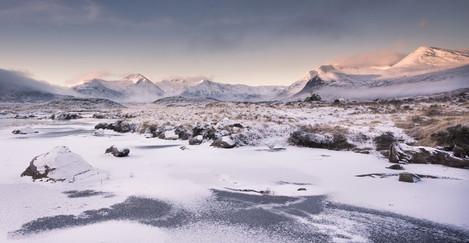
What sort of post processing do you undertake on your pictures? Give me an idea of your workflow..
When I see a view or composition I want to record, I have a good idea of what I want it to look like so whenever possible I create the image in situ using filters and camera settings. Nowadays, especially when using the Sony, the need for filters is reduced thanks to the camera’s dynamic range and high image quality. I only use one raw file and process within Lightroom. I don’t use layers or multiple images purely because I like to keep it as simple and natural as possible.
I don’t really do a lot of processing – no wonderful techniques or anything – so it doesn’t take me long to process an image. I’m usually just opening it to check the quality and do minor alterations such as adjusting the tonal look, warmth and removing any blemishes. The landscape is the raw material – I see it as my aim to make it look as good as possible and bring out the hidden qualities within.
Do you get many of your pictures printed and, if at all, where/how do you get them printed?
I have had very few images printed myself. The pleasure for me is in the taking of the photograph, and sharing it with others. I have to admit however that it’s a thrill when my images are used as cover shots on magazines, and the best feeling has been when my photos were used as covers on some of Stan Beckensall’s books. He’s one of the best-known experts on British prehistoric rock art and this achievement seems more permanent somehow.
Tell me about the photographers that inspire you most. What books stimulated your interest in photography and who drove you forward, directly or indirectly, as you developed?
The first true landscape photographs that I took notice of were taken by Joe Cornish, of locations in Northumberland and Scotland. I related to these images because they showed a particular realistic style that I identified with. I discovered the photography of Joseph Hoflehner about a year ago – he is from Austria and he works internationally but his work is mostly Americana-style film photography.
His images are top quality, very powerful and I’d love to be able to reproduce this style. I would recommend that people look him up. If I can mention another artist, although he’s not purely photography – I love the work of Andy Goldsworthy. We have a few of his books where he has recorded his natural sculptures, using leaves and pebbles etc. The pieces take great patience and I believe his style shows a crossover between my love of rock art with the natural landscape.
Tell me what your favourite two or three photographs of your own work are and a little bit about them.
Threave Castle
My first favourite would have to be the Threave Castle image which won the Landscape Award in the Scottish Landscape Photographer of the Year Completion. It was a winner for me right from the moment I took it. We’d set off really early as there was mist forecast, and after the short 15-minute walk from the car park to the jetty we could tell it was going to be a memorable morning. There was hardly any wind, the birds were singing, the mist was gently moving down the River Dee, and everything was just perfect.
First Light on Glen Coe
The next is First Light on Glen Coe – a snowy shot taken from Beinn a' Chrulaiste towards a snow-covered Buachaille Etive Mor - such a beautiful view. I set up my Sony A7r on a tripod and while I was waiting for dawn I entertained myself taking handheld shots with the RX10, a bit of multitasking going on.
It was taken last February and although dawn was relatively late it was still an early start for us, driving 4 hours from Carlisle and a scramble up the icy slope in the dark taking almost another two. Again, there was hardly any wind (thank goodness) and we sat and waited – a full moon, pink clouds, it was just lovely, if a little chilly.
The hill was a popular place that day, because as we sat there we said hello to a few folk walking up past us, and of course they were photographers too (who else would be mad enough to be up there in the snow at that time of day?) After the sun rose, it developed into a perfect winter’s day; Rannoch Moor and Loch Tulla were frozen over, and there were lots of decent shots to be had.
Cloud inversion from Latrigg
The third image is a cloud inversion shot taken from Latrigg in the Lake District. It was taken during another fantastic morning’s shooting. The conditions had been stable for a couple of days and so there was a good chance it would the same that morning – and we weren’t disappointed. Although we are relative locals, we hadn’t actually been up there before so didn’t know how long it would take from the car park, and we made it just in time to get about an hour’s good shooting before the sun’s warmth caused the mist to rise and for a while we were right in the middle of the clouds.
Again it was worth the trip to see the unforgettable sight of Catbells floating on air, and Keswick being invisible below the blanket of mist. It was very special to see Castlerigg, a place we are so familiar with, coming and going out of view. After choosing my current favourite images, I’ve realised that one thing links them all – they were all taken around dawn. I know I’m not the only photographer who has agonised over whether or not to gamble on yet another early rise and long drive but these images show that nothing ventured, nothing gained.
If you were told you couldn’t do anything photography related for a week, what would you end up doing (i.e. Do you have a hobby other than photography..)
I can’t imagine doing anything else – although I occasionally regret selling my old MkII Escort. I’m quite jealous of anyone owning a classic car so maybe one day I’ll have one again. If I took a break from photography for a week I’d probably try and go for a few walks without having to carry all the heavy gear with me! Otherwise it would probably be a night in with a good film and a decent curry.
What sorts of things do you think might challenge you in the future or do you have any photographs or styles that you want to investigate? Where do you see your photography going in terms of subject and style? I’m inspired.
I’m inspired by film photography such as that by Hoflehner and I’ve recently inherited a few older cameras I’d like to experiment with. I would also like to try and do more landscape images from higher up – but this depends on my fitness levels improving! I’d love to do some wild camping, and getting the chance to wake up to some fantastic scenes which so far I have only experienced through other people’s images.
Who do you think we should feature as our next photographer?
I would like to nominate Ian Hobson. Hob is one of the rock art enthusiasts we’ve met up with as mentioned above. We’ve had many a long interesting conversation about techniques so we both set off from a similar point but where I’ve steered towards the natural landscape, Hob has chosen a slightly different path. He has taken effects to another level and now does amazing things with lightpainting. It’s not landscape photography in the strictest sense; however he does most of it outdoors and occasionally even in daylight! You can see some of his work at www.lightpainting.org.uk

